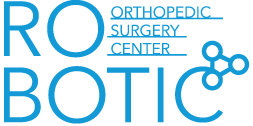Cutting-edge Technology and Innovative Approach in Orthopedic Joint Replacement Surgery
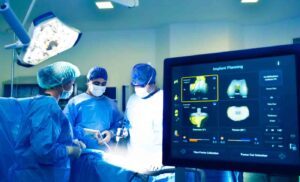
We are thrilled to introduce you to Robotic Orthopedic Surgery Center in Bursa, Turkey, which performs your kinematically aligned knee and hip replacement. We are proud of delivering personalized experience to meet your needs and exceed expectations. At Robotic Orthopedic Surgery Center, we are committed to providing the best care and experience for you. Our team is dedicated to making your surgery, stay, and the transition home as smooth as possible. 
Introduction to Kinematically Aligned Knee and Hip Replacement Surgery
Hip and knee joints are the most weight-bearing joints of the human body. Due to this function of the knee and hip joints, they are most commonly injured, which often results in osteoarthritis(OA). Pain, stiffness, loss of motion, deformity, and difficulty during walking are the main complaints of patients with hip and knee OA. If you can not walk or do your daily activities as you desire and all the other treatment options such as medications or physiotherapy do not help you any more than your orthopedic physician might recommend you knee or hip replacement surgery.
With all the improvements that have been made to techniques and instrumentation, hip and knee replacement surgeries are one of the safest and most successful types of operations, despite the fact they are affected by non-negligible rates of residual symptoms and complications. The criteria that are measured as a source of patient’s satisfaction are generally: recovery in a short time, easy return to a daily routine, a joint feeling natural, improving the implants’ longevity.
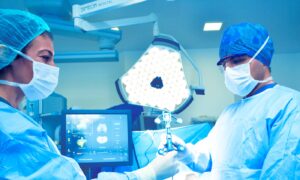
Unsatisfactory clinical outcomes are primarily mechanical and related to prosthetic impingement, dislocation, edge loading, wear, liner fracture, etc.
Recent advances in material and design of prosthetic components, which are sophisticated, hard-wearing material, and various shapes, sizes, and high modularity resulted in a more anatomical fit overall.
Precision and accuracy of implantation has significantly improved through the use of assistive technological tools (e.g., computed or robotic-assisted surgery, patient-specific cutting guides) and pre- or intra-operative tri-dimensional dynamic planning, respectively. These changes in practice over the last few decades could only partially reduce the unsatisfactory rate; nevertheless, complications have remained!

This maybe because of gold-standard techniques for implanting hip and knee components aim to implant all patients similarly, thus neglecting each individual’s unique joint anatomy and kinematics. Systematic techniques for joint replacement was originally devised for simplifying implantation, making it more reliable in the surgeon’s hands.
However, there are some intrinsical limitations in this systematic mechanical alignment (MA) technique:
- No respect of constitutional anatomy,
- No respect for physiological soft-tissue tension,
- No consideration of dynamic acetabular orientation.
Nevertheless, the fact is much like people themselves; no two knees are precisely alike. So, when a knee replacement is needed, the position and fit of implants should be as precise and individual as it can be.
In recent years, more personalized and anatomical/soft-tissue friendly techniques have been developed. Kinematic alignment techniques for implanting hip and knee components are gaining popularity. The kinematic alignment approach naturally aligns the patient’s joint by custom positioning the implants to the native joint line, just like it was before OA developed.
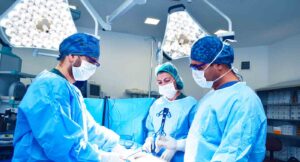
Considering all the satisfactory cradles and clinical outcomes, in our Robotic Orthopedic Surgery Center we have combined the most appropriate alignment technique, kinematic, with the most advanced implants material and design, and precise Robotic-assisted technological tools together.
We aim to reproduce patients’ native anatomy by customized methods and tools, therefore improving the prosthetic hip-knee kinematics and functional outcomes.
Combination of three pillars in our Robotic Orthopedic Surgery Center:
As an innovative approach with the technique and technology we use with this perspective, we would like to talk about their combination:
1. Kinematic Alignment: Briefly, there are two techniques used in replacement surgeries. One is the Mechanical Alignment(MA) technique. In this technique, implant placement is performed similarly in almost every patient. However, we all know that every patient has unique anatomy and therefore, implant positioning should be patient-specific.
In the other method, the Kinematic Alignment (KA) technique, the implant is positioned regarding each patient’s individual and unique knee or hip anatomy. KA technique aims to reconstruct a joint which has the patient spesific kinematics, just like before OA has developed. Since KA technique helps to maintain the natural structure of the knee and hip after surgery patients feel less pain, walk easily with a prosthetic joint but feeling like a natural one.
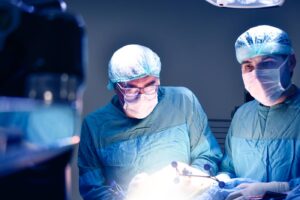
2. Robotic Surgery: While performing joint replacement surgeries, we successfully use a robotic surgery system that provides us the latest and advanced technology. Robotic surgery is the surgical system that ensures that the implants are placed in the most accurate and precise position by the patient’s joint structure. With robotic surgery, each patient’s knee or hip anatomy is determined with the computer-assisted system, and the 3-D model of the joint is established. The robotic surgery system provides more accurate planning and allows surgeons to place an implant precisely.
3. Kinematic Alignment with Robotic Surgery: One of the significant advantages of robotic surgery is that it enables us to perform kinematic alignment with high precision and accuracy. The positioning of the implant with the kinematic sensors, knee/ hip alignment, and balancing of the soft tissue is performed in a patient-specific way. Thus, a natural range of motion is achieved in the joint; patients experience a more natural knee feel, functions, and movements are improved.
JOURNEY◊ II Total Knee Arthroplasty:
Another factor determining the outcome of the surgery and patient satisfaction is the prosthesis used. In total knee arthroplasty, the prosthesis should meet the needs of the patient.
JOURNEY◊ II, is a prosthesis designed to create normal position, shape, and movement in the knee. Unlike conventional knee prostheses, JOURNEY◊ II is a technology that offers strong function, motion, and endurance for a more active lifestyle. Thus, it provides patient satisfaction by increasing the ability to perform daily movements and activities. This system is specifically designed for total knee replacement surgery.
“JOURNEY” actually means a journey of evolving total knee arthroplasty. This journey began with the commercial production of the first unicondylar knee on the market in the 1970s. In the 1980s, total knee systems with modern knee designs introduced. And then JOURNEY’s story has begun in the 2000s. It was the first total knee arthroplasty to accurately replicate the normal kinematic patterns of the healthy knee joint. Over 60,000 JOURNEY knees have been implanted around the world.
Now, as the latest generation and advanced technology, JOURNEY◊ II offers unique and new features: more knee function, durability, motion, and higher flexion. There is much clinical evidence that JOURNEY◊ II has improved functions. In a study analyzing the kinematics of 50 knees, it has been showed that JOURNEY◊ II exhibits a normal-like knee features (Grieco TF. et al., J Arthroplasty, 2017). Results of another study done with 200 patients indicate that, JOURNEY◊ II led to significant improvements in patient satisfaction, knee functions and flexion (Nodzo SR. et al., Tech Orthop. 2018).
As the first team that applied these new techniques successfully in Turkey, we are proud to offer advanced technology in joint replacement including; Robotic Surgery, Kinematic Alignment Technique, JOURNEY◊ II prosthesis, in a patient-centered care at a suitable cost.
The combined use of kinematic technique, robotic surgery and JOURNEY II technology allows physicians to find solutions for surgical treatment problems and break barriers. At the same time, it enables patients to have a more active lifestyle, short recovery time, and more native knee feel.
Make an appointment: +90 552 363 6 999 / info@roboticortopedi.com / www.roboticortopedi.com













